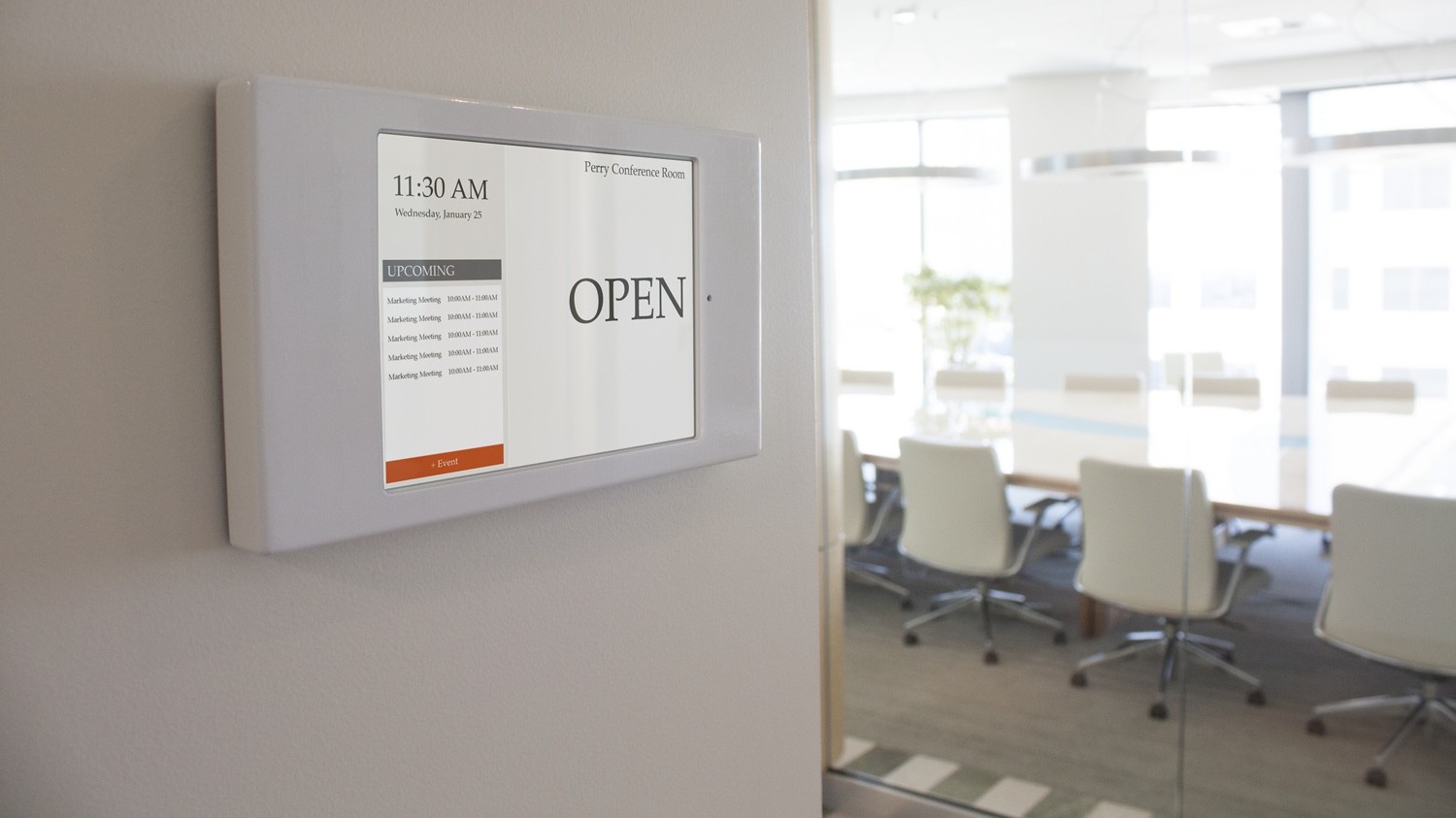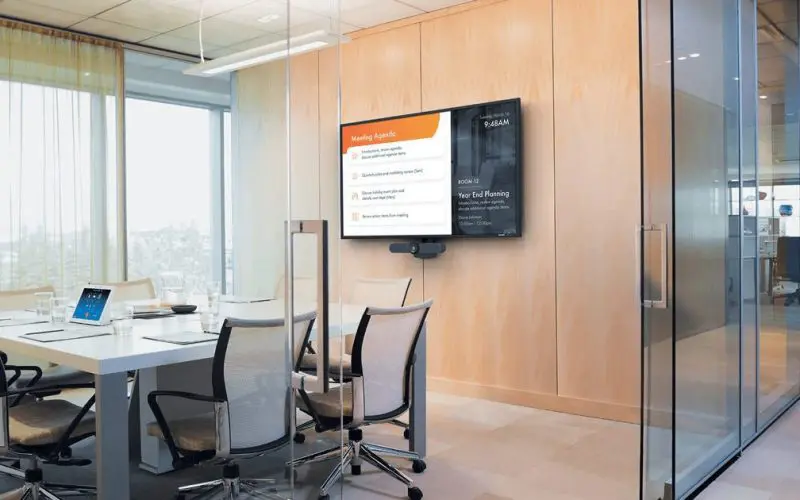
Conference Room Schedule Display
Conference Room Schedule Display In today's fast-paced and collaborative work environment, efficient management of conference room bookings is essential. A well-organized schedule not only ensures that meetings run smoothly but also maximizes productivity by minimizing scheduling conflicts.
What Is Conference Room Schedule Display:
Conference Room Schedule Display One of the key tools that can revolutionize conference room management is the conference room schedule display system. This article explores the benefits and features of these systems and how they can optimize efficiency and collaboration in the workplace.
Benefits of Conference Room Schedule Display Systems:
- Real-time availability: Conference room schedule display systems provide real-time information about room availability, enabling employees to quickly identify and book an available room for their meeting. This eliminates the need for time-consuming email exchanges or manual check-ins, streamlining the booking process.
- Avoid scheduling conflicts: These systems offer a centralized view of conference room bookings, allowing employees to see the schedule at a glance. This visibility helps prevent double bookings or overlapping meetings, reducing disruptions and ensuring efficient use of available resources.
- Enhance collaboration: Conference room schedule display systems often include features that promote collaboration. For example, some systems allow users to view the profiles and availability of meeting attendees, facilitating better coordination and scheduling. Integration with collaboration tools like video conferencing platforms can also simplify the setup of virtual meetings.
Features of Conference Room Schedule Display Systems:
- Interactive touchscreens: Many conference room schedule display systems utilize interactive touchscreens. These screens provide an intuitive and user-friendly interface for employees to view and book available rooms. Touchscreen capabilities allow users to easily navigate through the schedule and make bookings on the spot.
- Integration with calendar platforms: Integration with popular calendar platforms such as Microsoft Outlook, Google Calendar, or Apple Calendar is a key feature of these systems. This allows seamless synchronization of conference room bookings with individual calendars, ensuring that employees receive reminders and updates about their scheduled meetings.
- Customization options: Conference room schedule display systems often offer customization options to suit the specific needs of an organization. This can include branding options, the ability to display company logos or event details on the screens, and the option to configure booking rules and permissions based on user roles and departments.
- Analytics and reporting: Some advanced systems provide analytics and reporting features. These can offer insights into conference room utilization, booking patterns, and peak usage times. By analyzing this data, organizations can optimize room allocation, identify underutilized spaces, and make informed decisions about resource allocation.
Conclusion:
Efficient conference room management is crucial for fostering collaboration, productivity, and effective communication within organizations. Conference room schedule display systems provide a modern and streamlined solution for managing room bookings, avoiding scheduling conflicts, and enhancing collaboration. With real-time availability, interactive touchscreens, calendar integration, customization options, and analytics capabilities, these systems enable organizations to optimize their resources and create a more productive work environment. Investing in a conference room schedule display system can yield long-term benefits by improving efficiency and facilitating seamless collaboration among employees.

Conference Room Schedule Display How Its Works?
Conference room schedule display systems work by utilizing a combination of hardware and software components to provide real-time information about room availability and facilitate the booking process. Here's a breakdown of how these systems typically work:
Hardware setup:
- Display screens: The system requires dedicated display screens placed outside each conference room. These screens are typically interactive touchscreens or digital signage displays.
- Connectivity: The display screens are connected to the network, either via Ethernet or wireless connection, ensuring they can access the necessary data and communicate with the scheduling software.
Scheduling software:
- Centralized database: The system relies on a centralized database that stores information about conference rooms, their availability, and scheduled meetings. This database can be hosted locally or in the cloud.
- User interface: The scheduling software provides a user-friendly interface, accessible via computers, tablets, or smartphones, allowing employees to view and book conference rooms.
- Calendar integration: The software integrates with popular calendar platforms (e.g., Microsoft Outlook, Google Calendar) to synchronize room availability and bookings with individual calendars.
Room availability and booking:
- Real-time updates: The scheduling software continuously updates the database with real-time information about room availability. This ensures that employees have the most up-to-date information when checking for available rooms.
Displaying availability: The display screens outside each conference room show the current status of the room, indicating whether it is available, booked, or occupied. This information is dynamically updated based on the bookings in the scheduling software.
Booking process: Employees can interact with the display screens or use their devices to check the schedule, view room details, and book available rooms. They can select the desired time slot and confirm the booking, which updates the database and reflects the change in real-time.
Notifications and reminders:
- Confirmation notifications: After booking a conference room, the scheduling software can send confirmation notifications to the employee, providing details about the booking and any additional instructions.
- Reminders: As the meeting approaches, the system can send automated reminders to participants, ensuring they are aware of the scheduled meeting and its location.
Analytics and reporting (optional):
Some conference room schedule display systems offer analytics and reporting capabilities. They collect data on room usage, booking patterns, and other relevant metrics. Organizations can leverage this information to optimize room allocation, identify underutilized spaces, and make data-driven decisions about resource allocation.
Final Words:
By combining hardware (display screens) and software (scheduling software), conference room schedule display systems provide employees with a centralized and efficient way to check room availability, book conference rooms, and stay informed about their meetings. These systems streamline the booking process, minimize scheduling conflicts, and enhance collaboration within organizations.


No comments yet